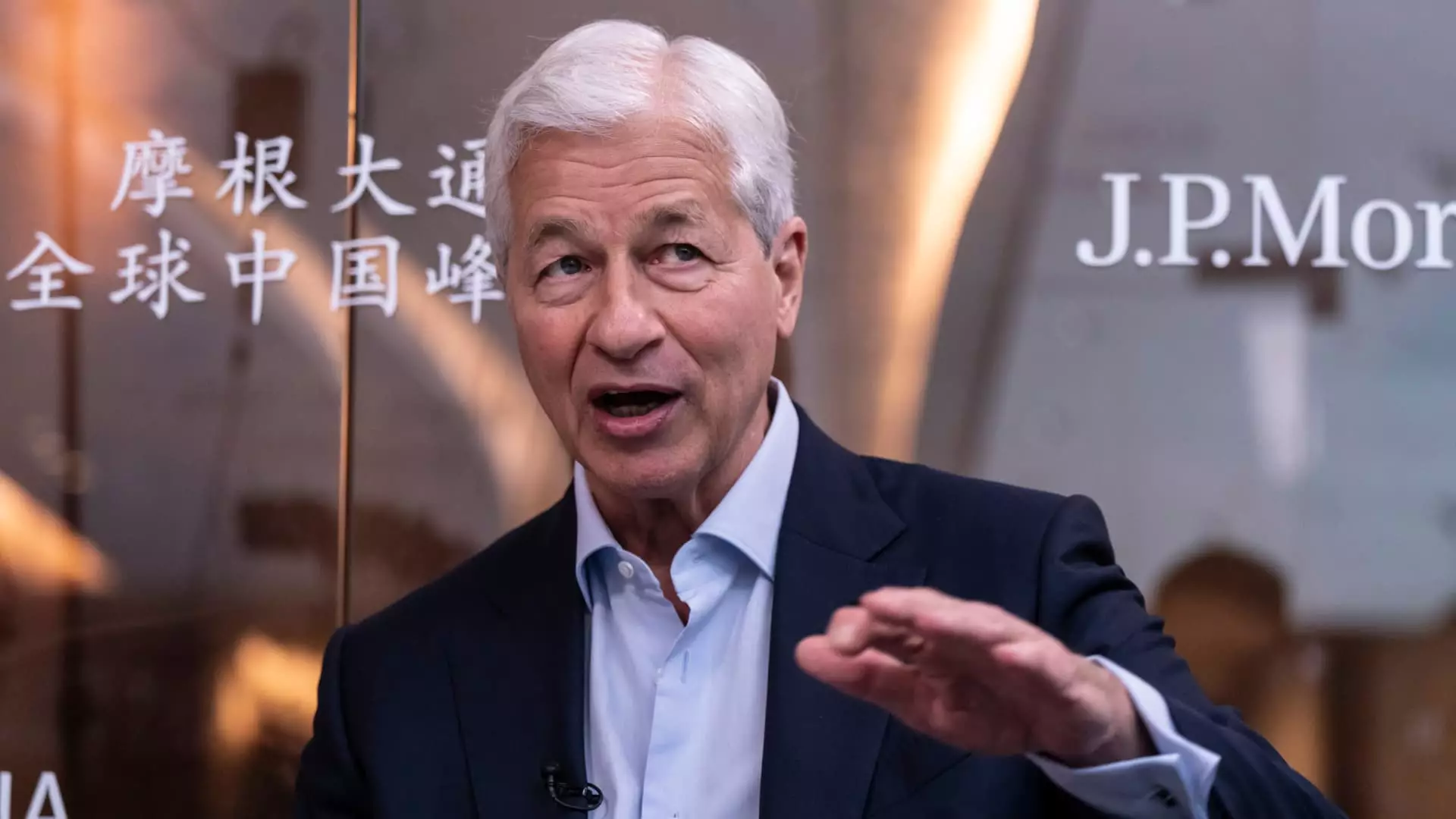As the second quarter earnings season approaches, many investors and analysts are anxiously gazing at the horizon, hoping for signs of stability and growth. Yet, beneath the surface, there’s a sense of unease. Despite optimistic forecasts that S&P 500 companies might show a modest 4.8% growth, the reality is more troubling: this marks the slowest growth rate since the last quarter of 2023. This slowdown isn’t coincidental but symptomatic of a broader issue—an economic environment increasingly distorted by geopolitical tensions, shifting tariffs, and an overheated financial sector. Instead of the resilient economy many wish to believe in, the upcoming results could unveil a fragile foundation, exposing vulnerabilities that threaten to ripple across markets and society.
The Banking Sector: A Reflection of Broader Systemic Challenges
The upcoming reports from giant banks like JPMorgan Chase, Citigroup, and Wells Fargo are not just annual financial checkups. They’re barometers of deeper systemic fragility. For years, these institutions have been symbols of American financial might, yet their recent performances narrate a different story. JPMorgan, despite its record-breaking past, faces a looming decline in earnings as Federal Reserve rate cuts threaten revenues derived from higher interest margins. That “considerable turbulence” warned by Jamie Dimon isn’t mere rhetoric but a stark reminder of how vulnerable even the largest banks are to macroeconomic shifts.
Wells Fargo’s streak of beating expectations masks underlying issues—flat revenue, declining net interest income, and shifting investor sentiment. The removal of asset caps and minor regulatory easing have temporarily buoyed the stock, but the underlying fragility remains. The once-unassailable fortress of banking optimism is cracking; sluggish growth and ongoing concerns about expense management highlight the risks of overreliance on short-term gains. These signs hint that the banking sector might be heading toward a scenario where traditional earnings are increasingly disconnected from the realities of a tightening economic environment, exposing workers and consumers to the fallout of systemic fatigue.
Major Retail and Consumer Giants: What They Reveal About Society’s Spending Power
Next up, the tech and consumer sectors—epicenters of modern economic vitality—face their own battles. Netflix’s earnings promise a 45% YOY increase, yet behind the scenes, consumer habits are shifting, and inflationary pressures continue to squeeze household budgets. Netflix’s success, often lauded, shadows a reality where entertainment spending remains one of the few pockets of consumer resilience, but even that is not immune to economic pressures.
Meanwhile, Johnson & Johnson’s expected decline in earnings underscores how macroeconomic headwinds—particularly geopolitical tensions like tariffs—hammer industries at their core. The threat of a 200% tariff on imported pharmaceuticals by the Trump administration is no small concern; it poses a significant threat not just to corporate profits but to access to affordable healthcare. Far from being just corporate earnings figures, these developments reveal a socio-economic landscape increasingly vulnerable to protectionist policies, which threaten to widen inequalities and hinder social stability.
The Investment Powerhouses: Indicators of Market Confidence or Hype?
Wall Street’s giants—Morgan Stanley and Goldman Sachs—are often heralded as the engines of economic growth and innovation. Their upcoming earnings reports are eagerly anticipated; however, they reflect more than raw financial performance. Morgan Stanley’s recent success in wealth management signals a shift toward services that cater to the ultra-wealthy, revealing a growing income disparity that could destabilize the broader economy if left unchecked.
Goldman Sachs, with its impressive 23% stock increase this year, embodies investor optimism—yet under the surface lies a potential disconnect. A 10% earnings increase may appear promising, but it’s still teetering on the edge of overvaluation and speculation. These institutions, while vital to economic vibrancy, also serve as indicators of capital concentration and financial inequality—factors that threaten the social fabric when increasingly wielded by the privileged few.
Beyond the Numbers: The Bigger Implication for Society
Ultimately, these earnings reports are not just about quarterly numbers—they are a mirror reflecting society’s collective health and stability. The slowing earnings growth hints at waning corporate vitality, a sign that the broader economy might be teetering on the brink of stagnation or worse. The persistent geopolitical tensions, regulatory uncertainties, and macroeconomic headwinds all threaten to deepen inequalities, strain public resources, and undermine consumer confidence.
In a center-leaning liberal view, this upcoming earnings season should serve as a wake-up call: economic indicators are increasingly disconnected from the lived realities of ordinary citizens. We must recognize that corporate profits and stock market performance, while important, do not define true economic health. What’s needed is a balanced approach—one that promotes responsible corporate stewardship, policies to protect consumers and workers, and strategic investments in social infrastructure—to ensure that economic growth is inclusive and sustainable rather than a facade masking deeper societal fractures.
In conclusion, as the market gears up for another earnings release cycle, it’s crucial to see beyond the surface. Rather than celebrate slow growth as a sign of stability, we should interpret it as a warning: our economic system is strained, vulnerable to shocks, and increasingly inequitable. This earnings season could serve as a pivotal moment—a chance to reevaluate what true prosperity means and how we can build an economy that works for everyone, not just the privileged few.



Leave a Reply